

CarExpert.com.au
The CarExpert team's favourite cars of 2025
3 Days Ago
Chery has fixed some key issues with its debut model's safety systems. But is it enough for us to recommend the Omoda 5?

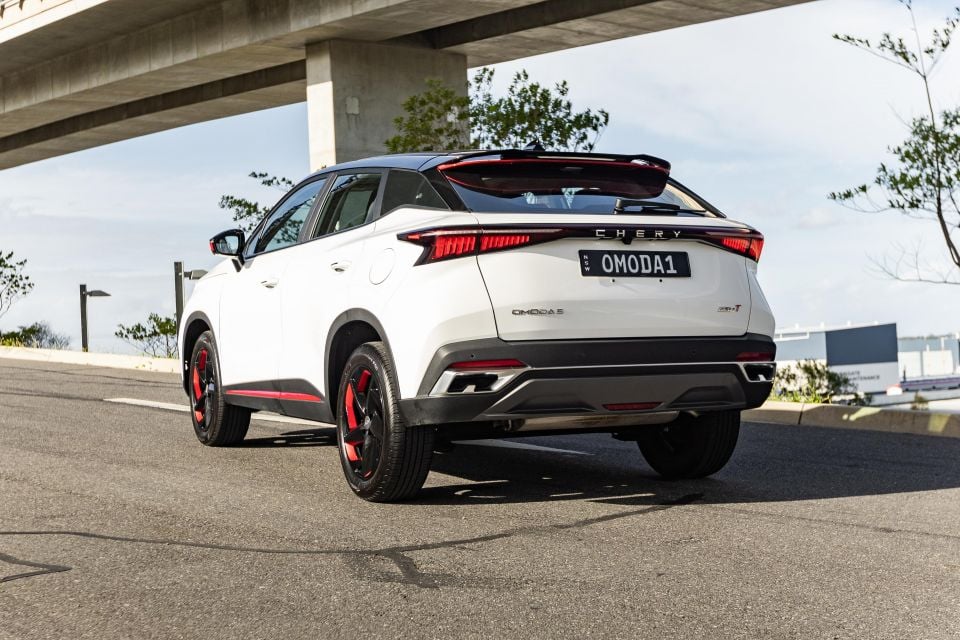

Quickly see how this car stacks up against its competition. Select any benchmark to see more details.
Where expert car reviews meet expert car buying – CarExpert gives you trusted advice, personalised service and real savings on your next new car.
In 2023 Chery returned to Australia after an absence of nine years with the Omoda 5 crossover, a rival to the likes of the strong-selling MG ZS and GWM Haval Jolion.

I had the opportunity to drive the Omoda 5 at launch, and came away deeply disappointed – nay, aggravated – by its poorly calibrated driver assist features.
The lane-keep assist would jerk dangerously for no reason, while the driver attention monitoring would ping incessantly no matter how attentive you were.
These features felt fundamentally broken, and detracted from a car that otherwise had some impressive qualities, such as distinctive styling inside and out, and a responsive powertrain.
Chery promises it has fixed these early build issues. Is the Omoda 5 now worthy of consideration?
Read on to find out.
The Omoda 5 range currently consists of two variants, and opens at $32,990 drive-away. Our EX tester rings up at $35,990 drive-away.

The latter is pricier than the range-topping petrol GWM Haval Jolion, at $33,990 drive-away. It’s also more expensive than the range-topping MG ZST Essence, also $33,990 drive-away.
All three Chinese SUVs significantly undercut comparably equipped rivals from Europe, Japan and Korea. Premium paint is $500, while opting for premium paint with red exterior accents adds $1100 to the Omoda 5’s price.
Chery hasn’t detailed its expanded Omoda 5 range for 2024, but it has previously confirmed the range will be supplemented with more powerful turbocharged 1.6-litre versions plus an electric version. It has yet to confirm any changes to pricing and specifications for the current 1.5T BX and EX variants.
To see how the Omoda 5 compares with its rivals, line it up side-by-side with any car you want using our comparison tool.
Buy your new car without the stress. It's fast, simple and completely free.

Great service from Travis and team, second time I have used this business would not hesitate to recommend them to anyone
Craig C.
Purchased a Ford Ranger in Sunshine Coast, QLD
CarExpert helped Craig save thousands on his Ford Ranger, now let us save you on your next new car.
Find a dealThe Omoda 5 at first glance impresses with its slick, modern cabin, featuring a dual-screen array, ambient lighting, an attractive steering wheel and shifter.

Those dual screens, which immediately capture your attention when you enter the vehicle, experienced some issues when I last drove the Omoda 5.
I was perturbed by a series of tech glitches that affected wireless Android Auto. Sometimes it wouldn’t connect, and attempts to try and re-establish a connection would result in a strange, distorted view.
The good news: those exact issues didn’t reappear. The bad news: there were some new problems instead. Android Auto connects instantly and generally maintains a steady connection. When it drops out though, forget about it.
One day it simply stopped working. This is especially bothersome in a car with no embedded satellite navigation.
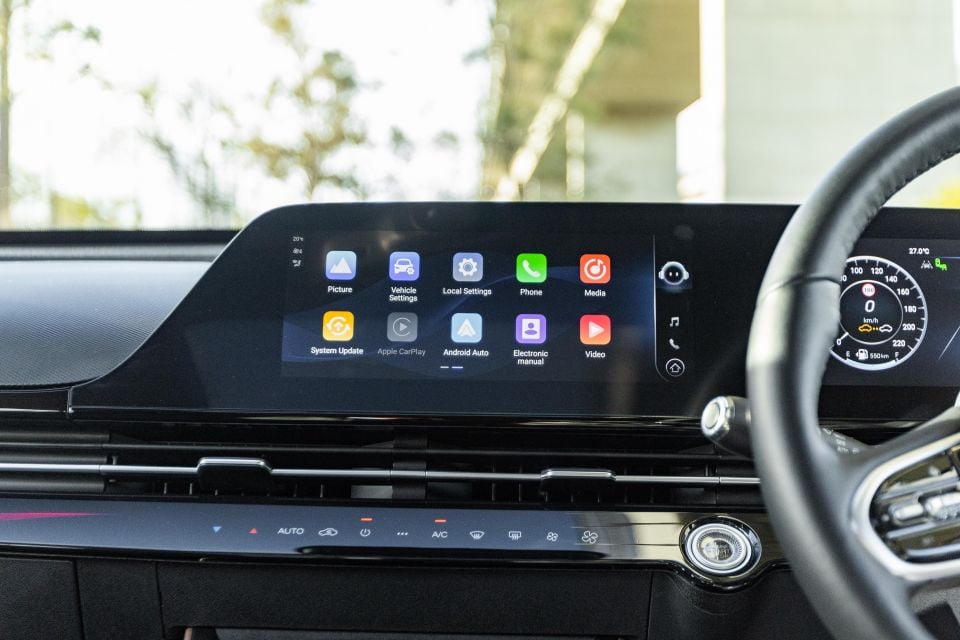
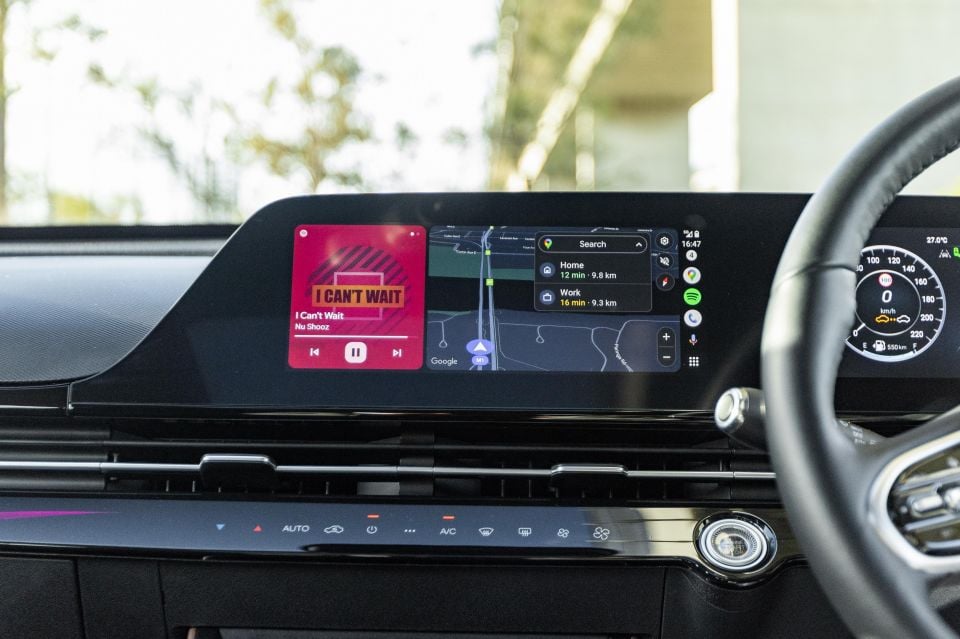
I tried restarting the car, un-pairing my phone and re-pairing it, both through the touchscreen and through my phone itself, but nothing worked. The next day; however, it worked fine.
The day after that, I experienced an issue far worse than Android Auto simply not working. When I started the car the entire screen was black.
I’d experienced this issue with Android Auto on one of my first days with the car, but this time not a single screen was visible; not the cameras, not the home screen, nothing. I could adjust the climate controls using the touch panel, but I couldn’t see what value I was adjusting the temperature to.
Once again, turning off the car and waiting a while seemed to fix it.
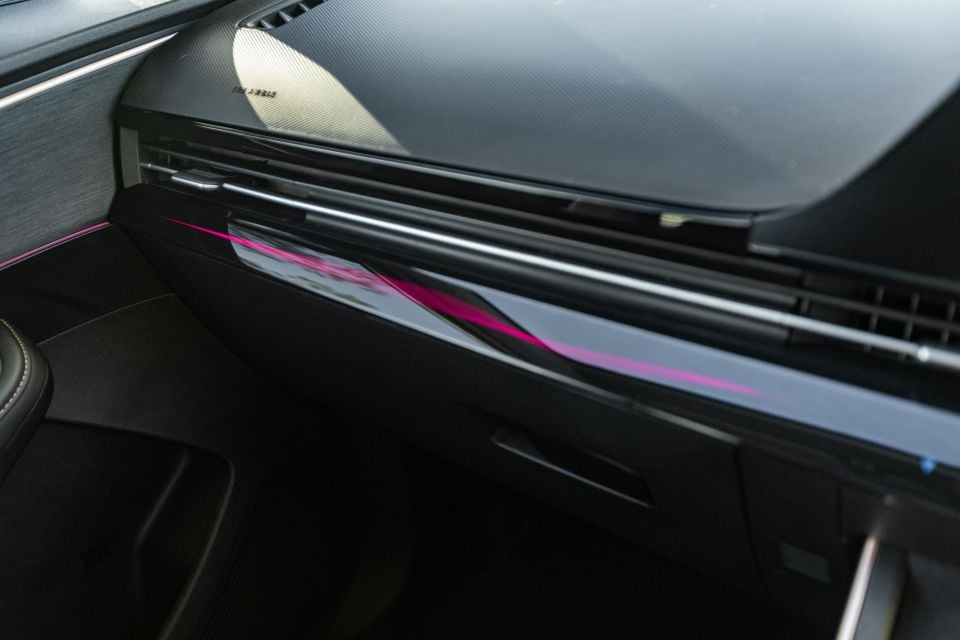
The buggy tech is disappointing as this is quite an attractive cabin, particularly the chunky, tactile steering wheel with its metal-look switchgear.
Copper-coloured accents and ambient lighting also add some contrast to the cabin, while the speckled trim of the centre console and its touch-capacitive switches is a refreshing change from tedious piano black trim.
It’s all a bit derivative of Mercedes-Benz inside – particularly that start button – but if you’re a budget brand looking for inspiration, why not look to the luxury players?
Usability is good too, with its wireless charging pad in plain sight, a storage shelf under the centre console, and sensibly sized cupholders and bottle holders up front.
Comfort is average. The Omoda 5’s seats are soft and squishy, common among Chinese vehicles, but the base is a bit short and there’s not much bolstering. The steering wheel adjusts for rake and reach.
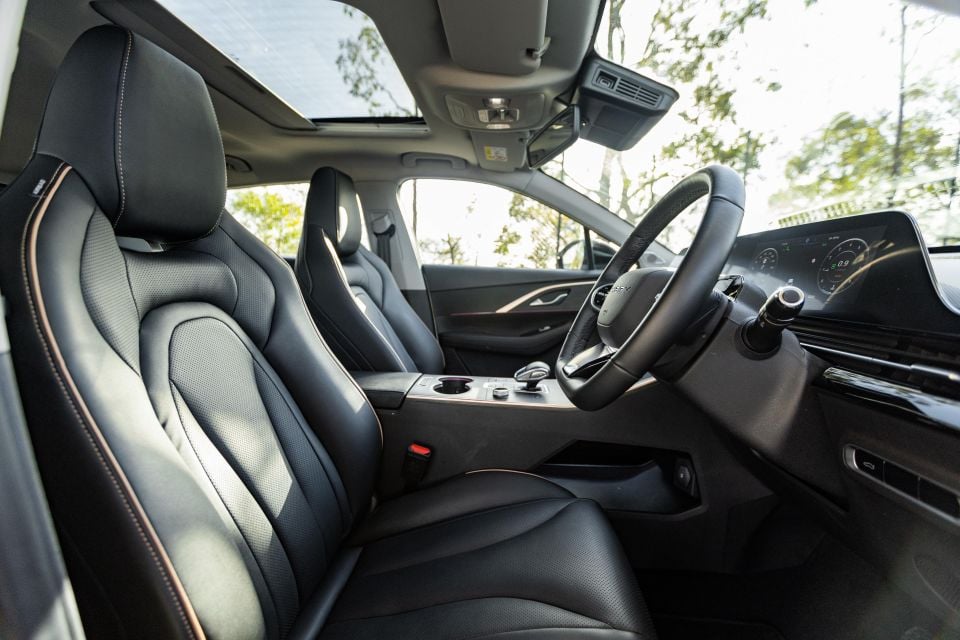
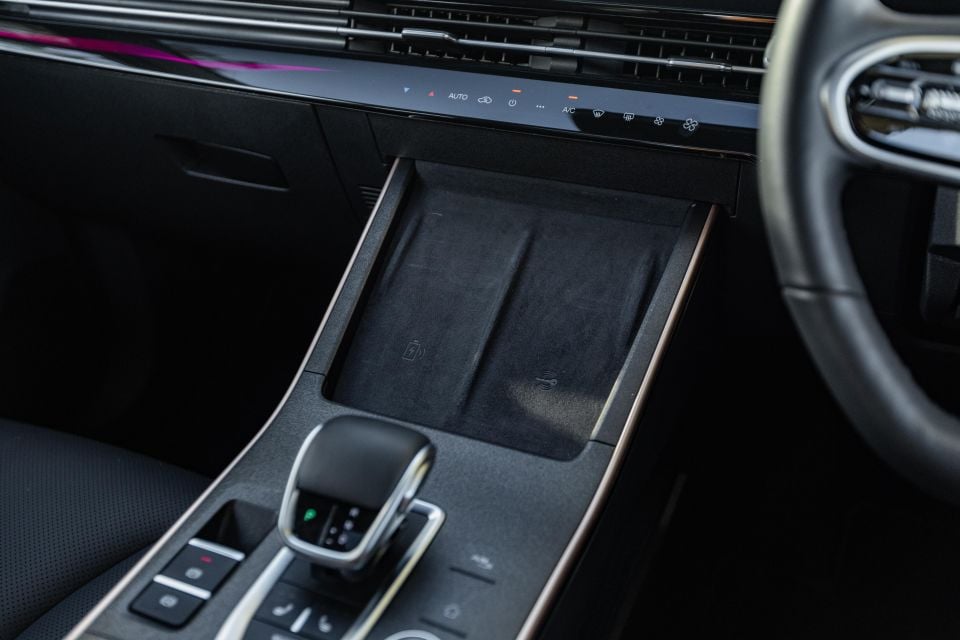
There’s a voice assistant you can program to respond to your voice prompt of choice and which can control features like the heated seats and climate control, while sound is pumped through a pretty decent Sony eight-speaker sound system.
The surround-view camera falls just short of GWM’s in resolution, but is still an impressive bit of kit and, like GWM models, features a 3D view where you can swipe around the vehicle to look at its surroundings.
The Omoda 5 has a function that allows the vehicle to unlock as you approach it and lock as you walk away, and it works well. The standard power tailgate is also a welcome inclusion.
Chery has moved away from buttons for the climate control, but at least most functions can be controlled via the touch-capacitive switchgear, unlike other Chinese brands that send you off into touchscreen menus.
Hold the applause; though, because this panel is inferior to conventional switches for one key reason: it looks filthy almost instantly. After a day, this gloss black panel was covered in smudges. There are some other odd choices in the cabin, too.
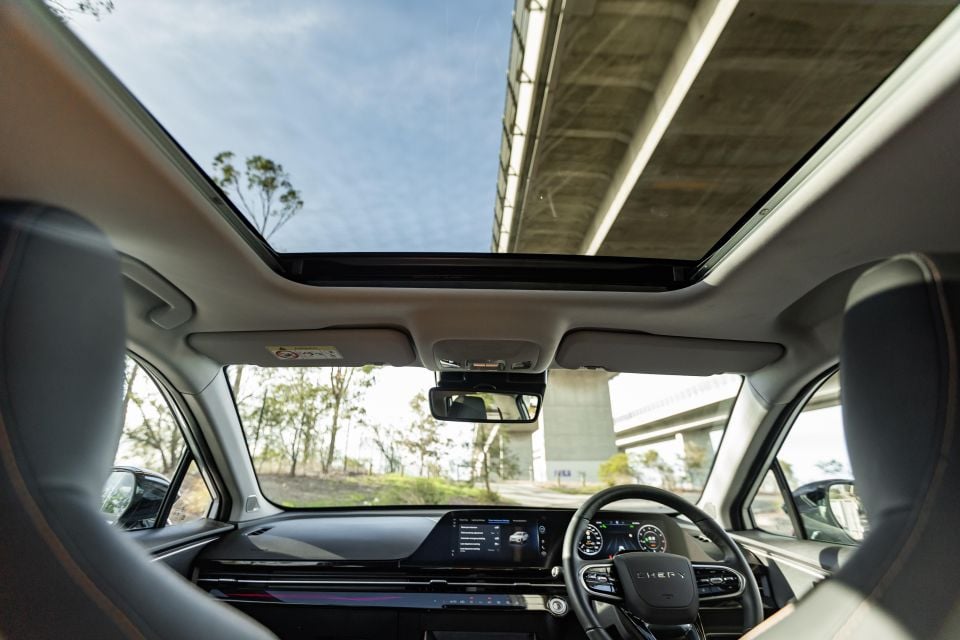
The area around the sunroof looks unfinished, with a big squirt of grease visible. The patterned material on the dash top is relatively soft, but it results in a lot of glare on the windshield.
The noise of the indicators irritated everyone who got into the car, and while the hateful rear-view mirror in the last car has fortunately been replaced, the new unit still doesn’t seem quite right.
Finally, the front USB-A and USB-C outlets – which admittedly you mightn’t need, given the wireless mirroring – are on the passenger side of the centre console, with the 12V outlet on the driver’s side.
Speaking of odd choices, whose idea at Chery was it to give the Omoda 5 a key fob you can’t actually attach to anything?

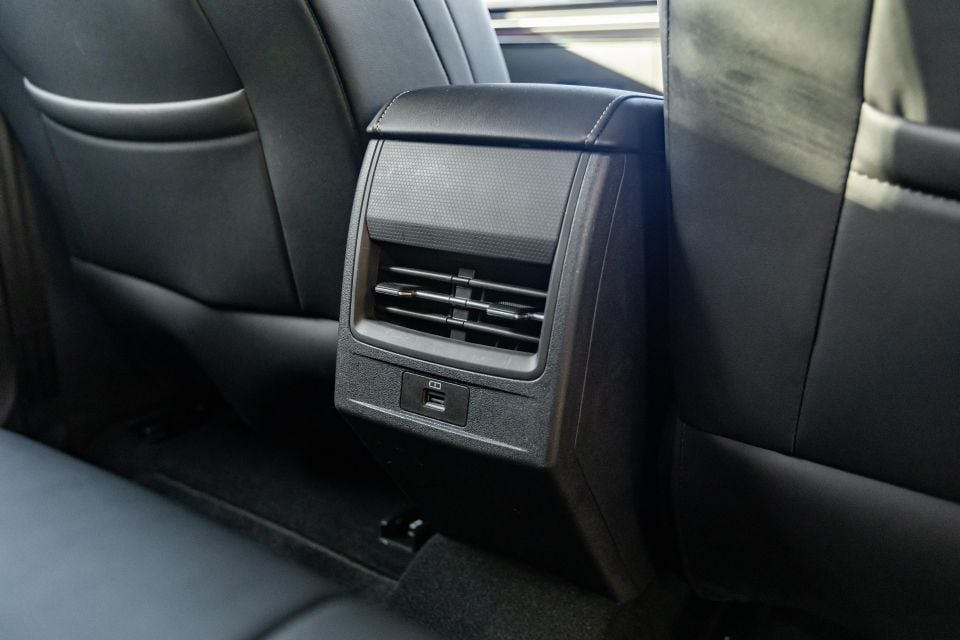
Step into the second row, and you’ll find there’s enough room for someone around 180cm tall to sit behind someone of a similar height even with the sunroof eating into headroom.
There’s no enormous driveline hump eating into space, and amenities include a single USB-A outlet, map pockets, a fold-down armrest with cupholders, and air vents. There are also three top-tether and two ISOFIX anchor points for child seats.
The Omoda 5 has 360L of boot space with the rear seats up, expanding to 1075L with them folded. That’s less than the GWM Haval Jolion (430L/1133L) and ZST (395L/1187L). A space-saver spare sits underneath the boot floor.
While there are some cheap plastics inside the Omoda 5’s cabin, particularly on the tops of the doors, we didn’t notice any glaring build quality issues. The screen array creaks a bit when you press it, but we didn’t observe it creaking without human intervention, unlike the last Omoda 5 I drove.
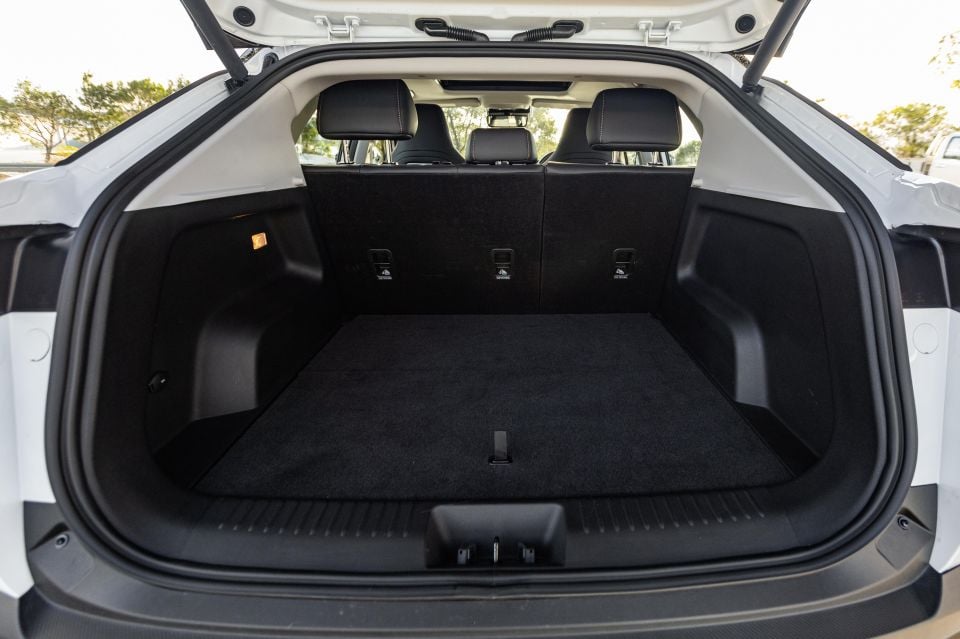
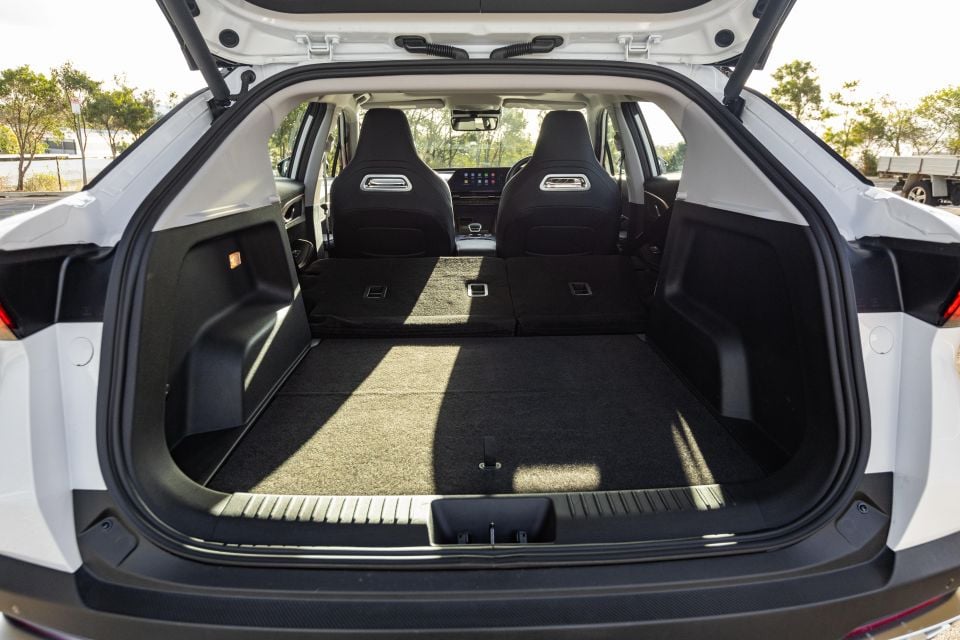
We did; however, notice some uneven panel gaps this time. Where the front fender meets the bonnet, the panel gap was visibly wide. In our super-duper scientific test, we could fit five credit cards in there, while the same gap on our photographer’s Mk7 Volkswagen Golf swallowed only two. Other gaps were much less gaping.
The Omoda 5’s exterior otherwise presents well, other than its somewhat narrow-track stance. The styling won’t be to everyone’s tastes, but you won’t mistake that grille for any other vehicle, while the red accents are distinctive and the white paint sparkles.
The Omoda 5 is powered by a 1.5-litre turbochargedfour-cylinder petrol engine producing 115kW of power and 230Nm of torque. Drive is sent to the front wheels via a continuously variable transmission (CVT).
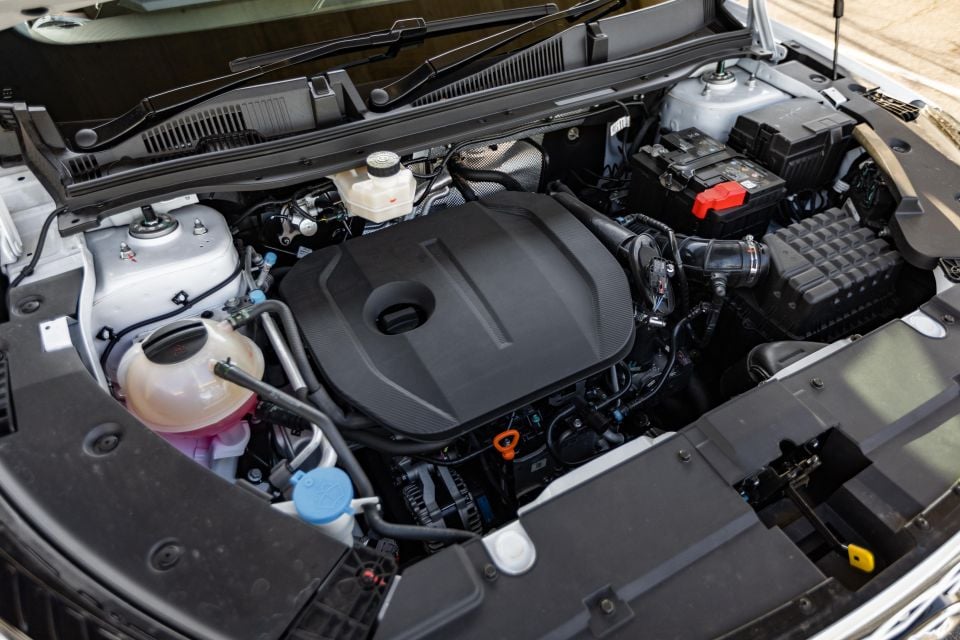
Those outputs are fairly par for the course in this segment. A Haval Jolion Ultra produces 110kW and 220Nm, a ZST Essence 115kW and 230Nm, and a Mitsubishi ASX GSR 123kW and 222Nm. Chery claims a 0-100km/h time of 9.9 seconds, but we’ve previously recorded a 9.24-second sprint.
If you’re after more power, Chery will soon introduce a 145kW/290Nm turbocharged 1.6-litre that will also bring standard multi-link (instead of torsion beam) rear suspension and a dual-clutch automatic transmission, plus optional all-wheel drive.
Over a loop comprising a mix of inner-city, suburban and highway driving, we averaged 7.8L/100km. All up, over the course of a week we saw fuel economy of 9.6L/100km, and that was with some highway driving included.
Given the official claim is 6.9L/100km, that’s very disappointing. My last loan of an Omoda 5 saw similarly disappointing observed economy, and in my review I said I hoped this would improve as the car is broken in.
Well, this car had more than 8000km on the odometer, so it should have been well and truly broken in. The Omoda 5 has a 50L tank, but fortunately requires only 91 RON regular unleaded fuel.
When I last drove the Omoda 5, any positive impressions it made were completely overshadowed by a lane-keep assist system that jerked the wheel even if you were driving within your lane, and a driver attention monitoring system that dinged incessantly even when your eyes were clearly focused on the road.
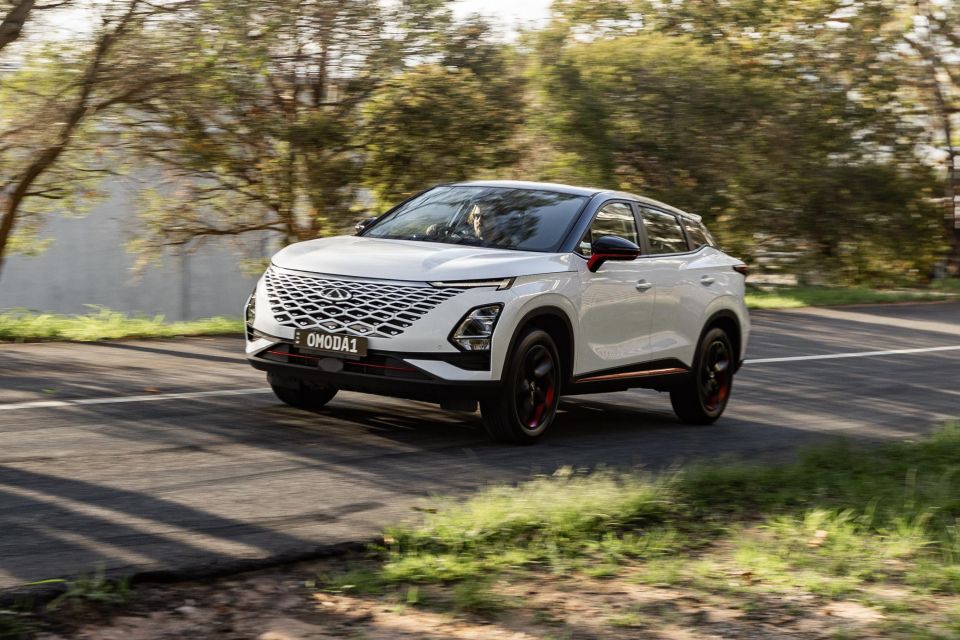
Fortunately, Chery has fixed the calibration of these two systems in the Omoda 5.
The driver attention monitoring system, which uses a camera atop the steering column, only chimed a couple of times, and both times occurred when I was admittedly looking at the touchscreen for too long.
The lane-keep assist now gives a gentle tug of the wheel if you’re in danger of crossing a lane marking, and works like most lane-keep assist systems.
If only Chery had fixed the Integrated Cruise Assist, which is intended to keep you travelling at a set speed and centred within your lane. It’s easy to miss – you hold the steering wheel button with a wheel icon down to activate it – so I didn’t test this feature last time.

When the car notified me to let me know conditions were ideal to try it out, I gave it a whirl – it’s rubbish.
Again, this seems like something Chery can probably fix with a software update, given the massive improvement it delivered to the lane-keep assist.
With Integrated Cruise Assist on, the wheel jerks erratically from side to side like it’s been possessed by a poltergeist. Despite this constant intrusion from the system, you never seem to stay centred in your lane all that well.
To make matters worse, the system constantly just gives up and notifies you the Integrated Cruise Assist has ‘exited’.

Where expert car reviews meet expert car buying – CarExpert gives you trusted advice, personalised service and real savings on your next new car.
Some systems in rival brands will sound a chime to notify you the system has stopped working, and this typically occurs where the lane markings on a road have ended (e.g. at an intersection) or are too faded for the camera to read.
I decided to count how many times the Chery did this within one minute on a highway with clear, uninterrupted lane markings, and almost ran out of fingers. I had to listen to the chime sound eight times in 60 seconds.
The speed limit assist feature also sounds a chime whenever you exceed the detected speed limit. It’s not as insufferable as the system in the latest Hyundai and Kia products, but like those vehicles it 1) defaults to on and 2) when turned off, takes the traffic sign recognition with it.
The auto hold defaults to on, too, but this is something we’re happy to see stay on.
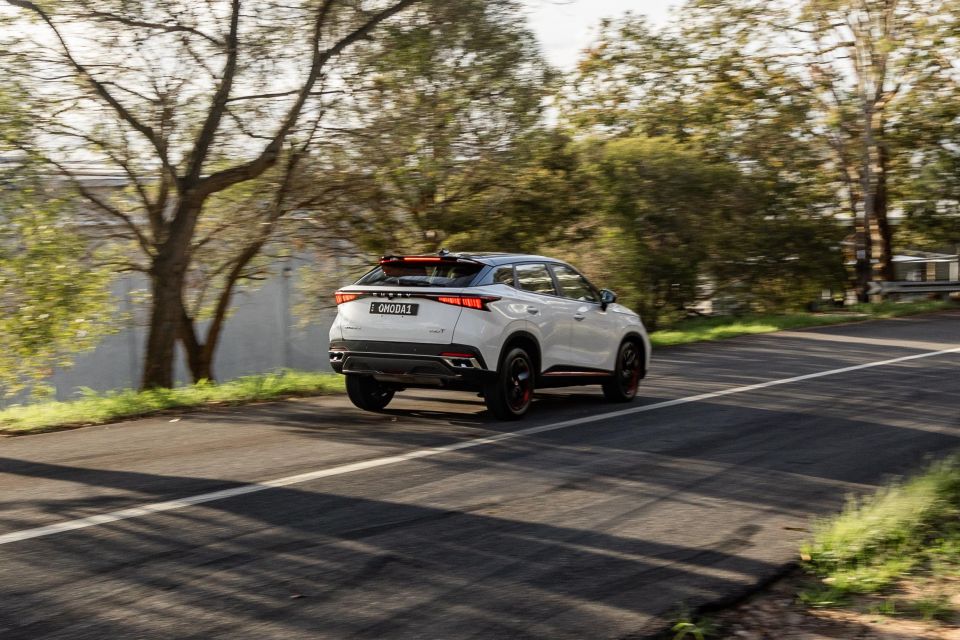
The reverse autonomous emergency braking system caused a minor scare when it applied the brakes as I reversed on the side of a road, parallel to a vehicle travelling in my direction. It wasn’t crossing my path, and I was reversing in a straight line, but the system still activated.
The driver assist systems clearly still need some finessing, but all of that can be turned off. What about the car itself? After all, you can’t change its dynamics with the press of a button.
Well, technically there is push-button drive mode selection, but sadly selecting Sport mode does nothing to add any weight to the overly light, vacant steering.
The Omoda 5 is a doddle to park because of this overboosted steering, but if you want a car that’s engaging to drive the steering will put you right off.
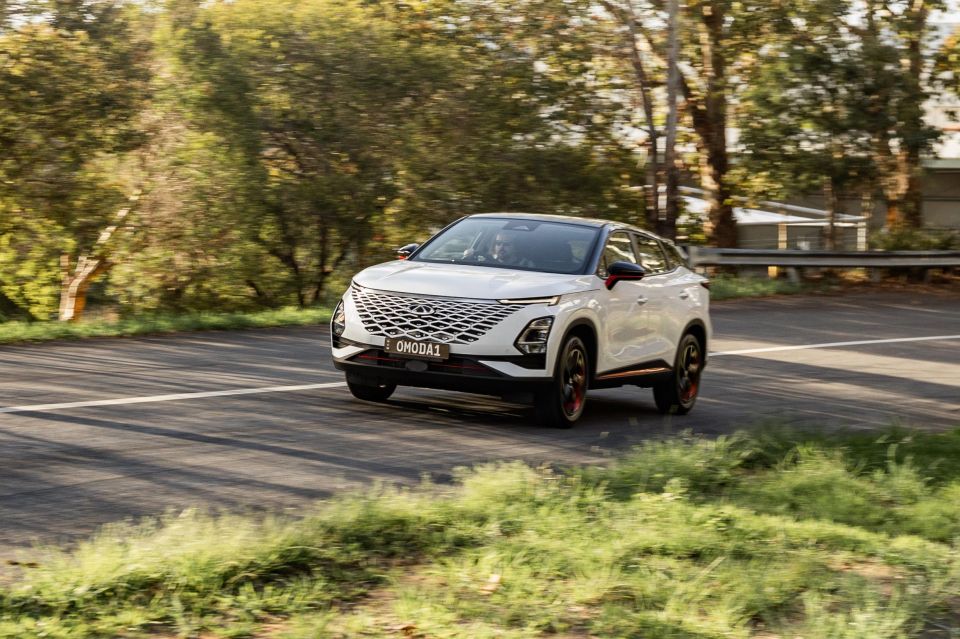
Of course, a lot of small SUV buyers aren’t looking for a hot hatch on stilts, and so light steering will be fine; especially considering it makes the car so easy to drive around town.
What will turn off even the least demanding drivers; however, is the brake pedal. There’s no feel to it whatsoever, and it’s hard to modulate. It doesn’t inspire confidence when you’re trying to come to a quick stop.
The shifter is also aggravating. It’s a slick-looking monostatic unit, as has become common, particularly in high-end vehicles, so there are no detents that you click between.
In the case of the Chery, you sometimes need to pull it more than once to get it into the gear you want, while other times a simple pull is too much and you end up in manual mode accidentally revving the guts out of the Omoda 5 in first gear.

On a few occasions, trying to quickly shift between Reverse and Drive saw us stuck in Neutral. Not great when you’re trying to quickly get out of the way of oncoming traffic when entering or exiting a parking spot, for example.
I didn’t observe any wind noise around the sunroof this time, and while there’s a bit of tyre roar I wouldn’t call the Omoda 5 noisier than many vehicles in this segment.
I didn’t take the Omoda 5 on any country road trips over poorly surfaced rural roads. The last time, I observed the car has a tendency to porpoise down undulating roads and heave over expansion joints.
Get onto some corrugated roads and the Omoda 5 further loses its composure, with lots of thumps from the suspension.
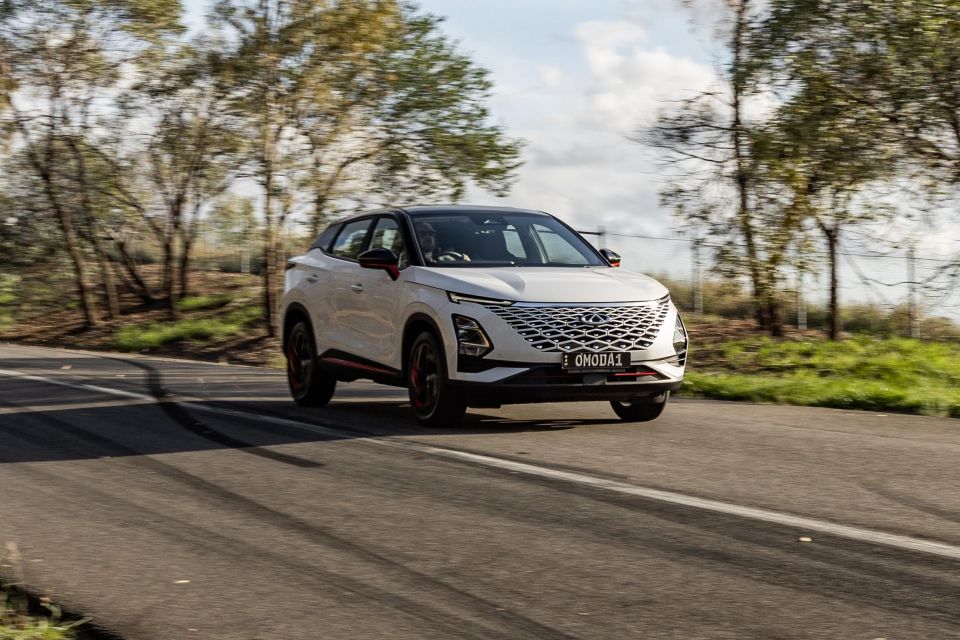
Winding mountain roads are no fun; the vacant steering and excessive body lean in corners see to that – this is no Ford Puma.
It’s a city slicker, being much more comfortable around town. The softly sprung suspension generally irons out pockmarked urban pavement; although, there’s some suspension noise as expansion joints announce themselves with a thwack.
The powertrain is where the Omoda 5 shines. Set aside the disappointing fuel economy, and it’s a rather sweet unit. There’s only a touch of lag off the line, and only a little CVT rev flare when you push it.
You won’t need to push it, because the CVT works well with the turbo engine to keep the car in the optimal rev range. It always feels responsive, and you don’t need to work this engine as hard as some rivals with naturally aspirated engines, which in turn means the engine never really makes much of a racket.
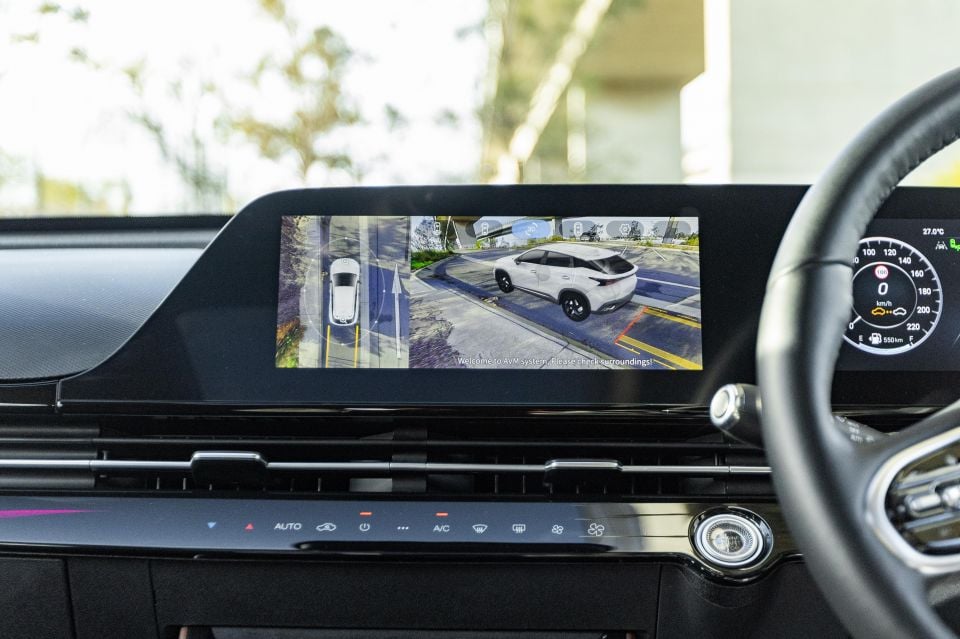
The engine sound isn’t bad, either. It’s a little gravelly and not terribly sporty, but hardly punishment for the ears.
We appreciate the inclusion of a CVT rather than a dual-clutch auto, as is common in small Chinese SUVs, including the upcoming 1.6-litre versions of the Omoda 5. We don’t yet know how that unit feels, but the Omoda 5’s CVT works well.
In short, the Omoda 5 is a car you likely won’t find enjoyable on a winding mountain road, a car you’ll tolerate but not love on patchier rural roads, but a car you’ll probably find quite pleasant around town.
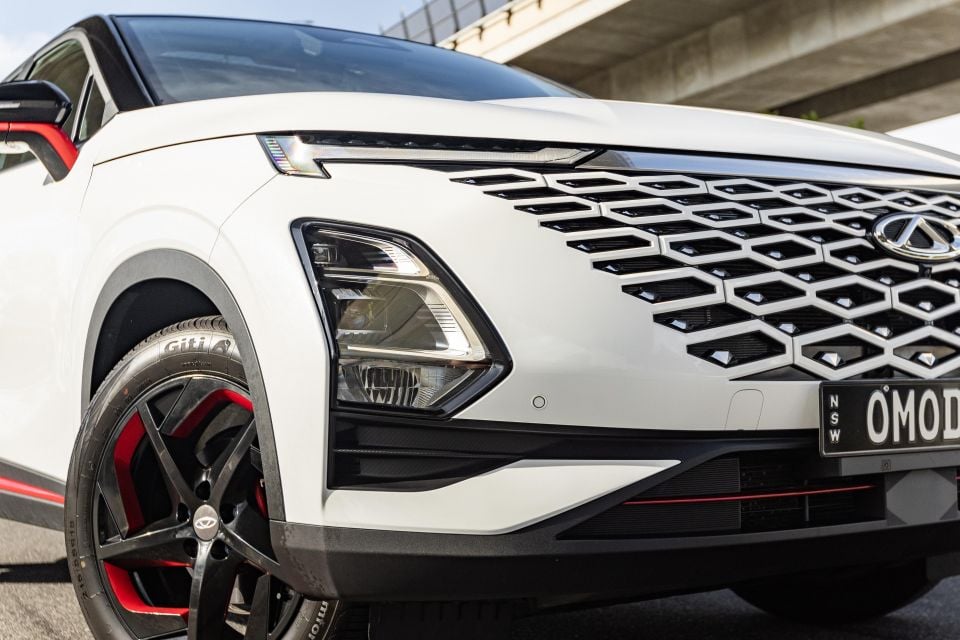
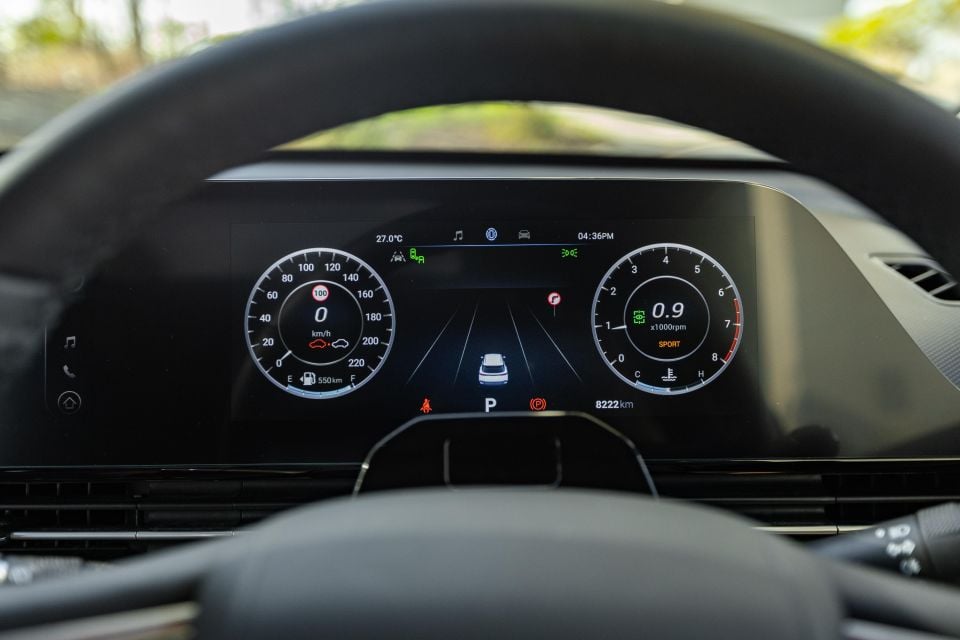
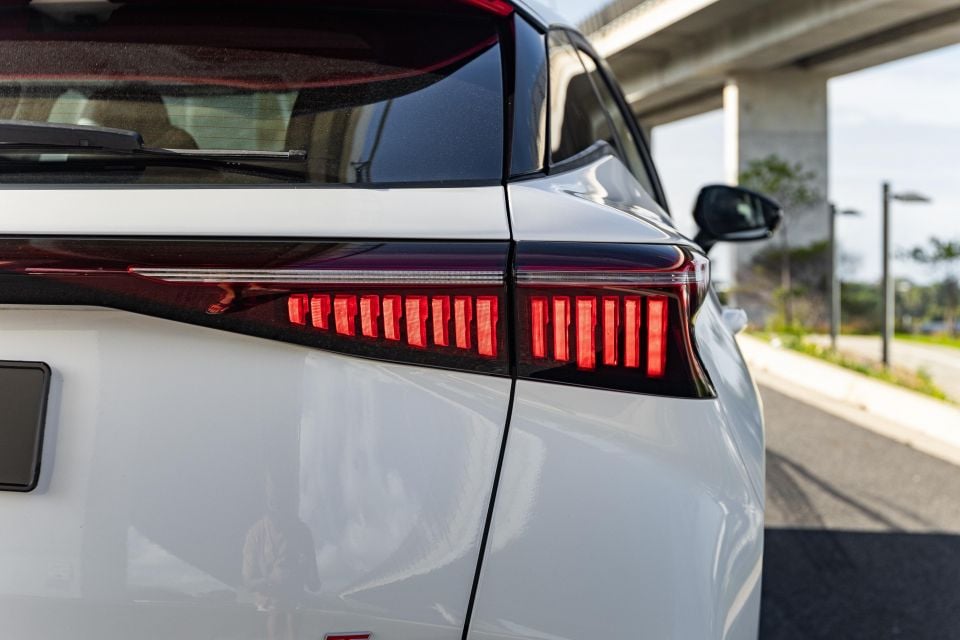

Omoda 5 BX highlights:


Omoda 5 EX adds:
For $2000 more than a ZST Essence or Jolion S, the Omoda 5 EX has a few features its rivals miss out on, but in turn misses out on some they have.
The Jolion has a larger, panoramic sunroof and a head-up display, while the ZST just has the former. Both the MG and GWM lack a heated steering wheel, wireless smartphone mirroring, and a power tailgate, however.
The Chery Omoda 5 wears a five-star ANCAP safety rating.
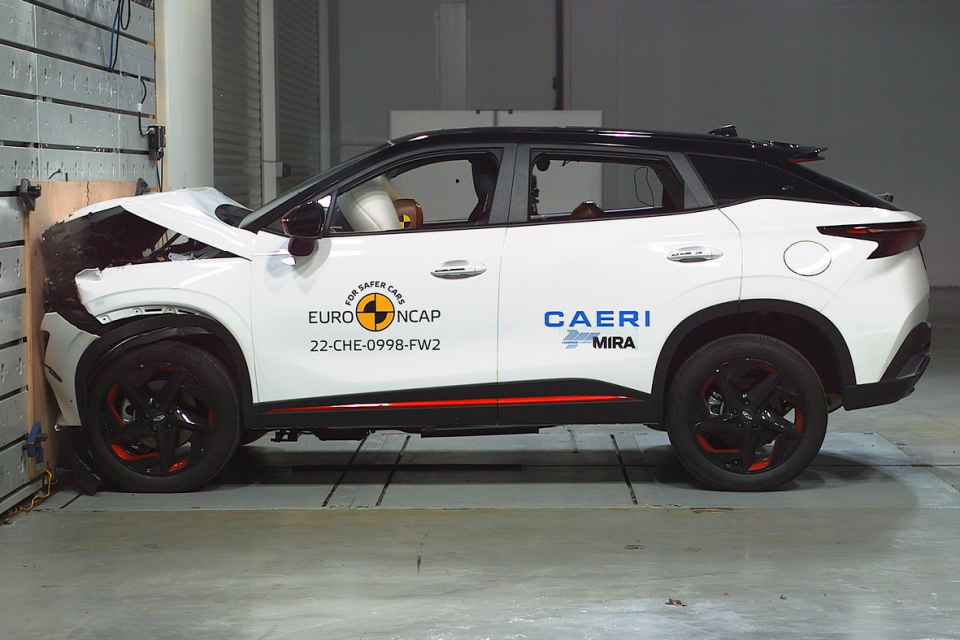
It received an adult occupant protection rating of 87 per cent, a child occupant protection rating of 88 per cent, a vulnerable road user protection rating of 68 per cent, and a safety assist rating of 83 per cent.
Standard safety features include:
The EX also receives a surround-view camera.
The Omoda 5 is backed by a seven-year, unlimited-kilometre warranty, and Chery offers seven years or 70,000km of capped-price servicing.
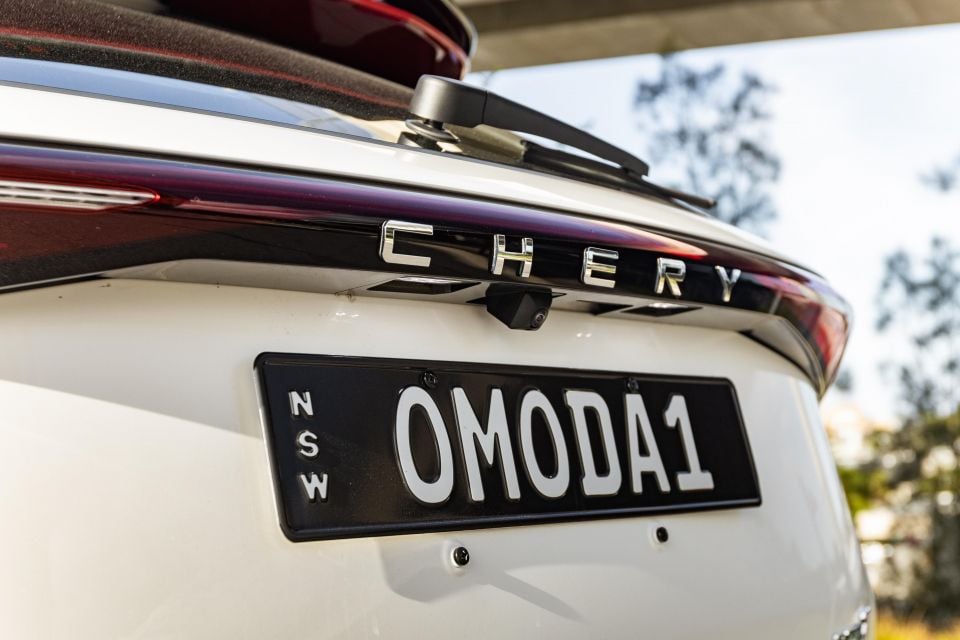
Intervals are a bit on the short side at 12 months or 10,000km, but prices are quite affordable at $280 for the first five, $391.04 for the sixth, and $295.54 for the seventh.
That’s cheaper than its fellow Chinese small SUVs. An MG ZST 1.3T, for example, costs $2339 over seven years, while the Omoda 5 costs $2086.
Chery shouldn’t have brought the Omoda 5 here without properly calibrating its lane-keep assist and driver attention monitoring features, as they were horribly calibrated – at least the company fixed the issues quickly.
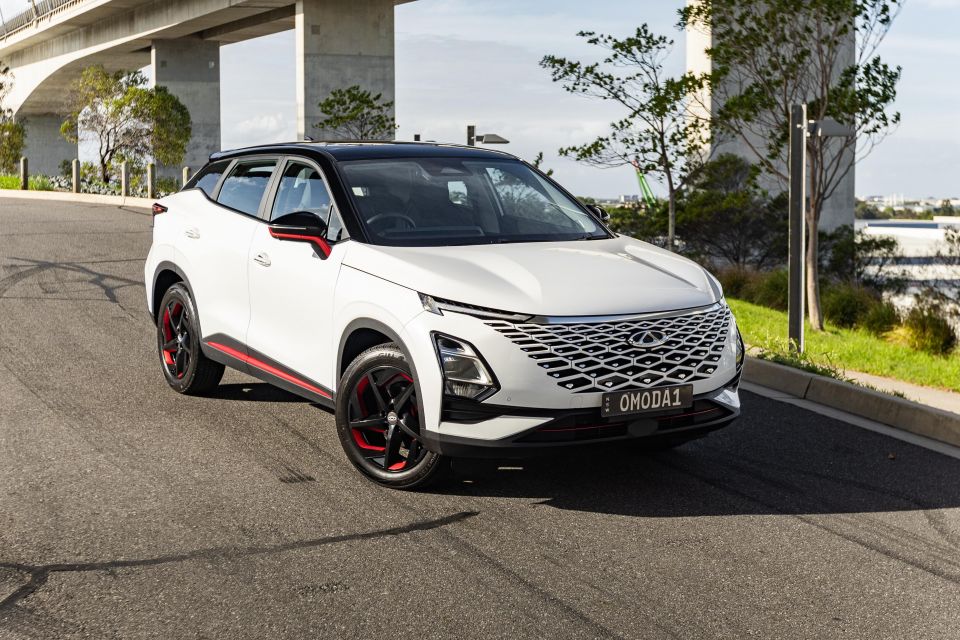
That gives us hope the remaining tech issues – and there are still a few – will also be fixed.
From buggy Android Auto to an Integrated Cruise Assist that you won’t want to endure for more than a minute, the Omoda 5 is a cautionary tale about putting too much tech in a car without testing it all first.
Then there are the foibles unrelated to its long list of standard tech features, like the spongy brake pedal, lifeless steering, floaty ride, and, on our tester at least, some disappointing build quality.
If everybody buying a small SUV in Australia valued zesty dynamics above all else; however, our streets would be filled with more Ford Pumas and Volkswagen T-Rocs.
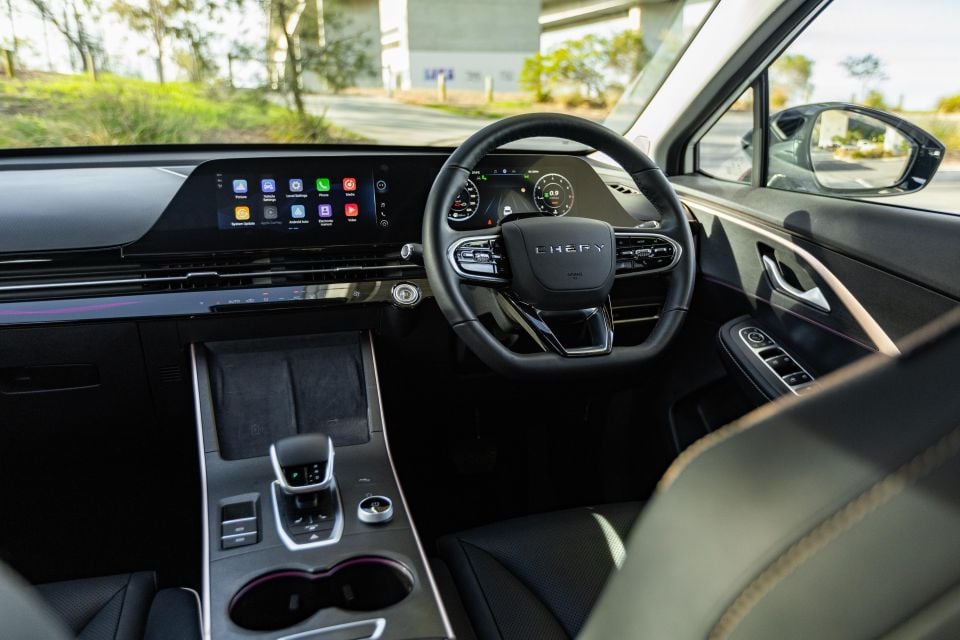
For a lot of people, the Chery Omoda 5 will tick more than enough boxes.
The steering is light, but if you’re an undemanding driver you’ll appreciate how easy it is to park and steer around town. The styling is gaudy, but you may appreciate how distinctive it is, particularly in the funky Jupiter Blue and Titan Green finishes.
Then there’s the almighty dollar, and that’s where the Chery really shines. For the amount of equipment you get, the Omoda 5’s price is tantalising. Throw in a pretty decent powertrain and a long warranty, and you can see why this is already climbing up the sales charts.
Chery, there’s still plenty of work to do. But there’s a decent base here, and with some local dynamic tuning and some software updates, the Omoda 5 could significantly narrow the gap with rival SUVs.

Click the images for the full gallery
BUY: Chery Omoda 5 MORE: Everything Chery Omoda 5
Where expert car reviews meet expert car buying – CarExpert gives you trusted advice, personalised service and real savings on your next new car.
William Stopford is an automotive journalist with a passion for mainstream cars, automotive history and overseas auto markets.


CarExpert.com.au
3 Days Ago


Damion Smy
3 Days Ago


Damion Smy
4 Days Ago


Josh Nevett
4 Days Ago


Max Davies
4 Days Ago


Ben Zachariah
5 Days Ago